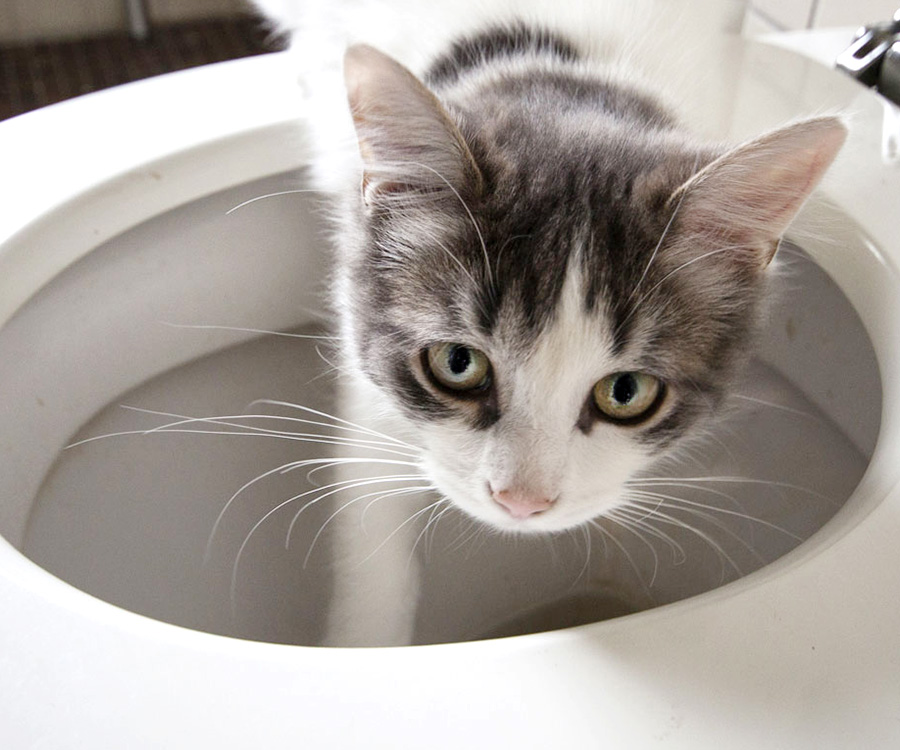Never Flush Cat Poop Down Your Toilet - Protect Your Plumbing System
Never Flush Cat Poop Down Your Toilet - Protect Your Plumbing System
Blog Article
Just about every person seems to have his or her own perception with regards to Don’t flush cat feces down the toilet.

Introduction
As pet cat proprietors, it's necessary to be mindful of just how we take care of our feline good friends' waste. While it may appear hassle-free to flush pet cat poop down the bathroom, this practice can have destructive repercussions for both the setting and human health and wellness.
Alternatives to Flushing
Thankfully, there are more secure and a lot more responsible means to get rid of cat poop. Take into consideration the following choices:
1. Scoop and Dispose in Trash
The most usual approach of throwing away cat poop is to scoop it right into a biodegradable bag and toss it in the trash. Make sure to use a specialized clutter scoop and take care of the waste quickly.
2. Usage Biodegradable Litter
Opt for naturally degradable pet cat litter made from products such as corn or wheat. These litters are environmentally friendly and can be securely dealt with in the garbage.
3. Hide in the Yard
If you have a yard, take into consideration hiding pet cat waste in a designated location far from vegetable gardens and water resources. Make certain to dig deep enough to avoid contamination of groundwater.
4. Mount a Pet Waste Disposal System
Invest in an animal garbage disposal system especially designed for feline waste. These systems make use of enzymes to break down the waste, reducing odor and environmental influence.
Wellness Risks
In addition to environmental worries, purging feline waste can additionally pose health dangers to human beings. Pet cat feces might contain Toxoplasma gondii, a parasite that can trigger toxoplasmosis-- a possibly extreme ailment, especially for pregnant women and individuals with weakened body immune systems.
Ecological Impact
Purging pet cat poop presents harmful pathogens and parasites into the supply of water, posing a considerable danger to water ecosystems. These pollutants can negatively impact aquatic life and concession water top quality.
Verdict
Liable pet dog possession expands past giving food and sanctuary-- it additionally entails correct waste administration. By avoiding flushing feline poop down the toilet and choosing alternate disposal techniques, we can lessen our environmental footprint and safeguard human health.
Why Can’t I Flush Cat Poop?
It Spreads a Parasite
Cats are frequently infected with a parasite called toxoplasma gondii. The parasite causes an infection called toxoplasmosis. It is usually harmless to cats. The parasite only uses cat poop as a host for its eggs. Otherwise, the cat’s immune system usually keeps the infection at low enough levels to maintain its own health. But it does not stop the develop of eggs. These eggs are tiny and surprisingly tough. They may survive for a year before they begin to grow. But that’s the problem.
Our wastewater system is not designed to deal with toxoplasmosis eggs. Instead, most eggs will flush from your toilet into sewers and wastewater management plants. After the sewage is treated for many other harmful things in it, it is typically released into local rivers, lakes, or oceans. Here, the toxoplasmosis eggs can find new hosts, including starfish, crabs, otters, and many other wildlife. For many, this is a significant risk to their health. Toxoplasmosis can also end up infecting water sources that are important for agriculture, which means our deer, pigs, and sheep can get infected too.
Is There Risk to Humans?
There can be a risk to human life from flushing cat poop down the toilet. If you do so, the parasites from your cat’s poop can end up in shellfish, game animals, or livestock. If this meat is then served raw or undercooked, the people who eat it can get sick.
In fact, according to the CDC, 40 million people in the United States are infected with toxoplasma gondii. They get it from exposure to infected seafood, or from some kind of cat poop contamination, like drinking from a stream that is contaminated or touching anything that has come into contact with cat poop. That includes just cleaning a cat litter box.
Most people who get infected with these parasites will not develop any symptoms. However, for pregnant women or for those with compromised immune systems, the parasite can cause severe health problems.
How to Handle Cat Poop
The best way to handle cat poop is actually to clean the box more often. The eggs that the parasite sheds will not become active until one to five days after the cat poops. That means that if you clean daily, you’re much less likely to come into direct contact with infectious eggs.
That said, always dispose of cat poop in the garbage and not down the toilet. Wash your hands before and after you clean the litter box, and bring the bag of poop right outside to your garbage bins.
https://trenchlesssolutionsusa.com/why-cant-i-flush-cat-poop/

We were brought to that write-up on How to Dispose of Cat Poop and Litter Without Plastic Bags through a good friend on another site. So long as you liked our blog posting if you please make sure you remember to pass it around. I am grateful for your time. Kindly check up our blog back soon.
Rates Report this page